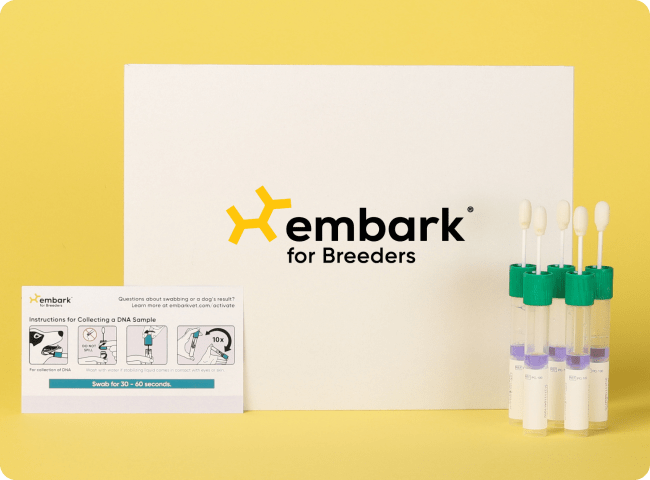Von Willebrand Disease Type III, Type III vWD
von Willebrand Disease (vWD) is the most common hereditary bleeding disorder in both dogs and humans and is caused by reduced or non-functional von Willebrand Factor (vWF). Dogs with this form of Type III vWD have absent vWF levels with moderate to severe clinical signs.
-
Signs and symptoms
Affected dogs bruise easily, have nose bleeds, and excessively bleed from small wounds. Affected puppies may bleed excessively from their mouth when teething or when adult teeth come in. There may be bright red blood in their vomit, stool, or urine, or bits of black digested blood in the stool.
This disease is typically diagnosed in puppies or young adults when they are spayed or neutered and have a problem with clotting. However, it can be diagnosed at any age. -
Diagnosis
vWD is diagnosed through genetic testing and blood testing at a laboratory. Veterinarians may also nick a dog’s lip with a sterile needle and time how long it takes for clotting to occur. Although carriers of the variant are not expected to have a high rate of clinical signs and do not bleed excessively following trauma or surgery, bleeding may occur if a carrier co-inherits another blood disorder. If there are any concerns, a blood test should be performed on carriers as well.
-
Treatment
vWD cannot be treated, only managed. Preventing injuries is goal number one. If your dog requires surgery, your veterinarian should be warned that excessive bleeding may occur, and blood products should be on hand in case a transfusion is required.
-
What to do if your dog is at risk
Actions
- Prevention is key! Minimizing the risk of trauma and informing your veterinarian so that surgeries can be carefully planned are the best ways to prevent a catastrophic outcome.
- Be aware of the location of the nearest emergency veterinary hospital in case of an accident.
-
Genetic Information
This variant was first identified in the Nederlandse Kooikerhondje.
vWD Type III is inherited in an autosomal recessive manner, meaning a dog must have two copies of the variant to be affected by it.
Gene names:
VWF Intron 16 ‐ chr
Inheritance type:
recessive
-
Breeds affected
This health condition affects the following breeds
Learn about your dog’s unique genetic health
Dog owners
Breed identification, health and trait insights, personalized care recommendations, and the world’s first canine relative finder—all in one leading dog DNA test.
Learn about the report for dog ownersShop the test
Breeding programs
Embark’s test for breeding programs is one comprehensive DNA test designed with your needs in mind.
Learn about the report for breedersShop the test



